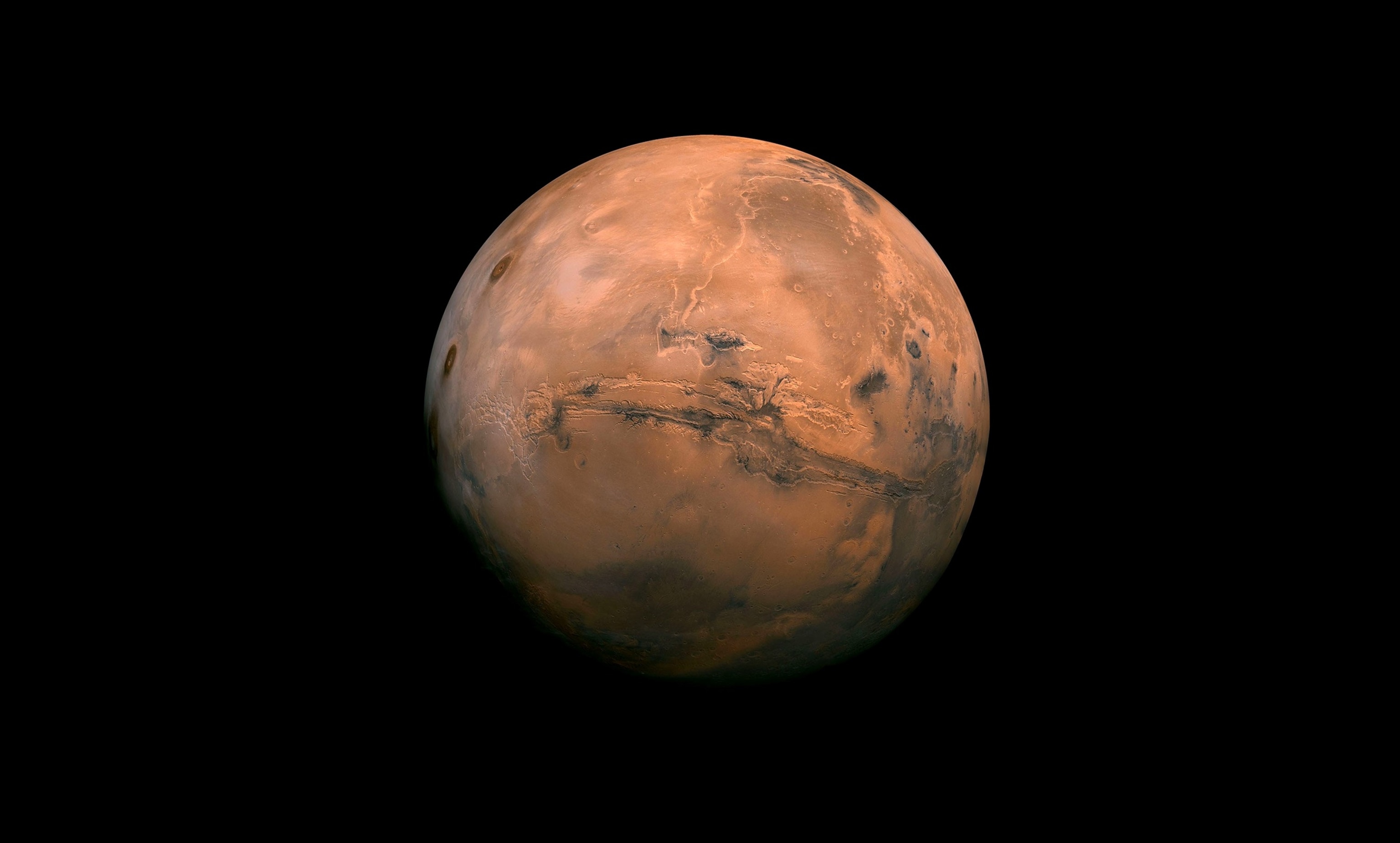Mars is a cold, dry, desert-like planet. But billions of years ago, scientific evidence suggests that it had a thick atmosphere, which kept it warm enough to support flowing water on its surface. So, what happened to the Red Planet, and could it happen to Earth?
“From everything we know about the history of Mars through robotic exploration, it had very similar chemistry [to Earth]. It had very similar periods of time and development. It had that thicker atmosphere, had standing water, fresh water. All the things that Earth had,” said Casey Dreier, chief of space policy at the Planetary Society.
“So, what went wrong? Why don’t we see Mars as a rich planet now? That’s exactly the kind of thing that helps us put Earth in context and hopefully makes us appreciate Earth a little bit better as an outcome of that,” he added.
Dreier says one of the reasons Mars no longer has a dense and protective atmosphere is that the planet lacks the same kind of magnetic field that keeps Earth safe from the sun’s highly charged particles.
To better understand how solar wind energy interacts with Mars’ atmosphere and magnetic environment, and how that might have altered the planet’s surface, NASA and the University of California, Berkeley’s Space Sciences Laboratory are sending twin orbiters to the Red Planet.
The ESCAPADE mission, short for Escape and Plasma Acceleration and Dynamics Explorers, is the first dual-satellite mission to another planet. Two identical spacecraft will orbit in formation to provide a first-of-its-kind 3D view of Mars’ magnetosphere and upper atmosphere.
A unique route to the Red Planet
Scheduled to lift off on Sunday at 2:45 p.m. ET from Kennedy Space Center in Florida aboard a Blue Origin New Glenn rocket, the two probes will take a unique path to Mars. Instead of the traditional route used by previous Mars missions, UC Berkley says the ESCAPADE will first travel to a Lagrange point, an area in space where the pull of Earth’s and the sun’s gravity is balanced. The two craft will loop around it for about a year and then slingshot back toward Earth on their way to Mars.

Blue Origin’s new Glenn rocket
Blue Origin
This flexible route could pave the way for future Mars missions by allowing for launch schedules spread over many months, which is essential if humans are to send fleets of spacecraft to Mars.
Sunday’s launch is only the second flight of the New Glenn rocket, a much more powerful rocket than the company’s New Shepard, which it uses for its regular space tourist missions to the edge of space. New Glenn is more than 320 feet tall, partially reusable and capable of delivering payloads to low, medium and geosynchronous orbits.
Unlocking the magnetic mysteries of Mars
NASA says the two identical Mars probes, which are nicknamed Gold and Blue after UC Berkeley’s school colors, “will reveal the planet’s real-time response to space weather and how the Martian magnetosphere changes over time.”
The two probes are about the size of a mini-fridge and weigh nearly 250 pounds.
Once they arrive at Mars in 2027, “The twin probes are designed to complement each other and unlock a more complete, real-time picture of how the Martian atmosphere blows off into space,” according to an analysis of the mission by the Planetary Society.
Dreier says that understanding what happened and is happening to Mars could help scientists better protect our own climate and atmosphere from current and future solar threats.
“The interaction between the sun’s particles and the atmosphere of Mars is thought to be one of the driving reasons that Mars no longer has a dense and protective atmosphere itself on the planet. So, understanding that relationship helps us understand the history and processes that have stripped away Mars’s atmosphere over time,” Dreier explained.
Safeguarding future astronauts from solar threats
The mission’s principal investigator, Robert Lillis of the Space Sciences Laboratory, emphasized that mapping Mars’ magnetic fields and how they respond to space weather is also critical for safeguarding future astronauts who may visit the planet. Solar storms and background cosmic radiation could pose significant risks to settlers, and lessons from this mission could help NASA protect human crews who may eventually spend time there.
“We will be making the space weather measurements we need to understand the system well enough to forecast solar storms whose radiation could harm astronauts on the surface of Mars or in orbit,” Lillis said in a press statement.

The planet Mars, seen from space.
NASA
Dreier says the ESCAPADE mission is building on the science collected by MAVEN, another probe that has been studying the planet’s atmosphere since 2014. He notes that the mission is costing significantly less than previous scientific missions to space.
A mission on a budget
“This is a very, very, very low-cost mission for these types of science missions. This is roughly $70 to $80 million,” said Dreier. “It’s one of these smallest mission classes that NASA has, and as a consequence of that, it’s a very limited and focused set of scientific priorities, and it’s almost itself demonstrating the feasibility of doing missions like this.”
Dreier points out that NASA is facing the prospect of significant budget cuts and the decommissioning of a number of spacecraft, including MAVEN. He says wiping out the space agency’s science missions could have detrimental long-term consequences.
“It was actually looking at planets like Mars and also looking at planets like Venus that made scientists on Earth realize our climate and our planet is not this fixed, unchanging sphere. Things can go really, really, really wrong over the course of long periods of time,” said Dreier.
“Understanding that we weren’t owed an atmosphere, that we aren’t owed this protection from our magnetic field, puts this into context that the life and the habitat that we have here on Earth is actually very rare, but it’s also relies on and is protected by a number of these external factors that we are really just beginning to understand over the last generation or two,” he added.








